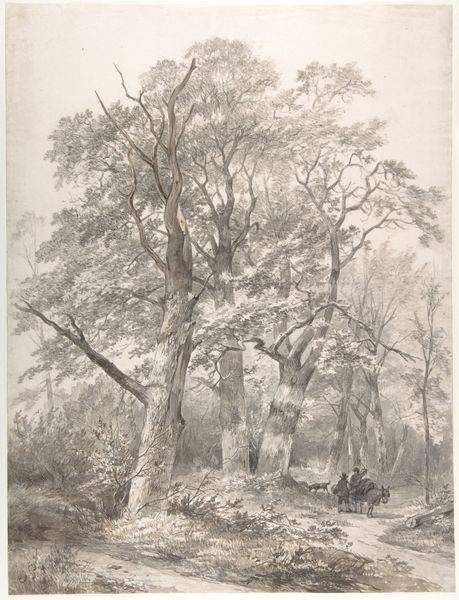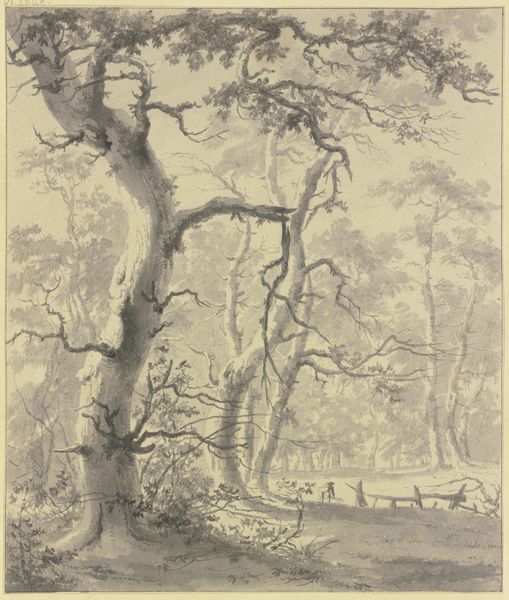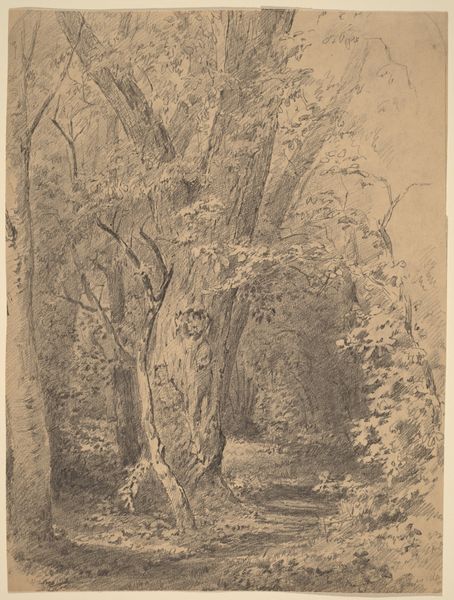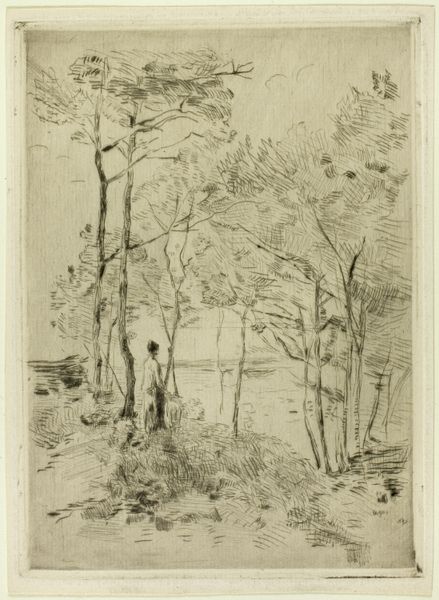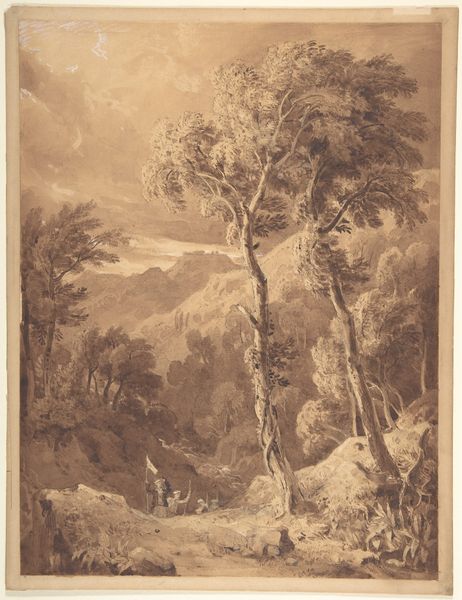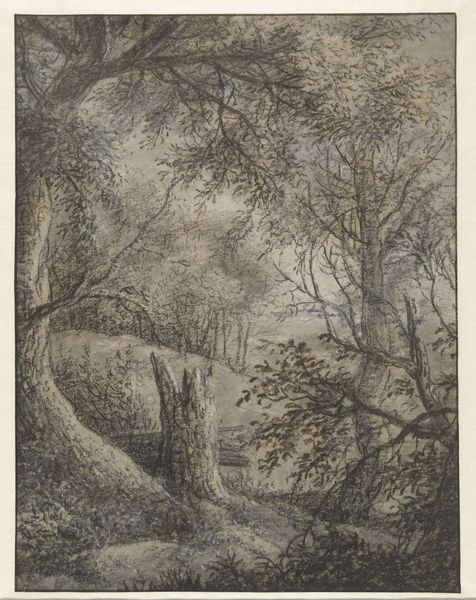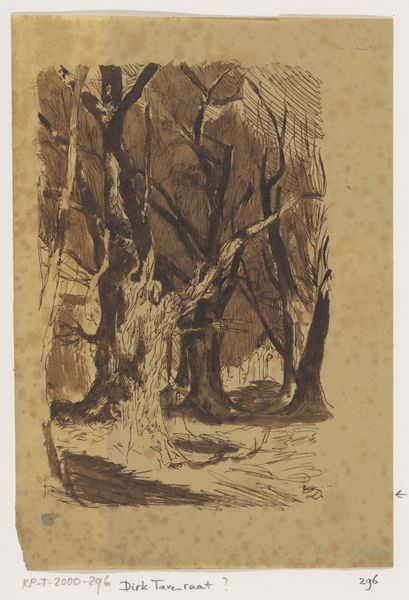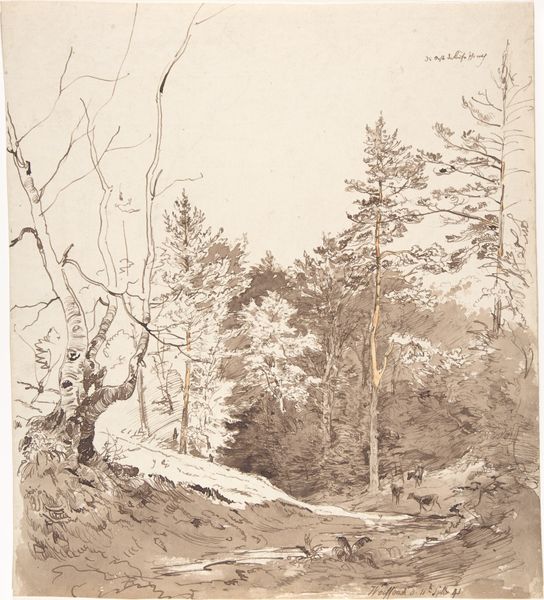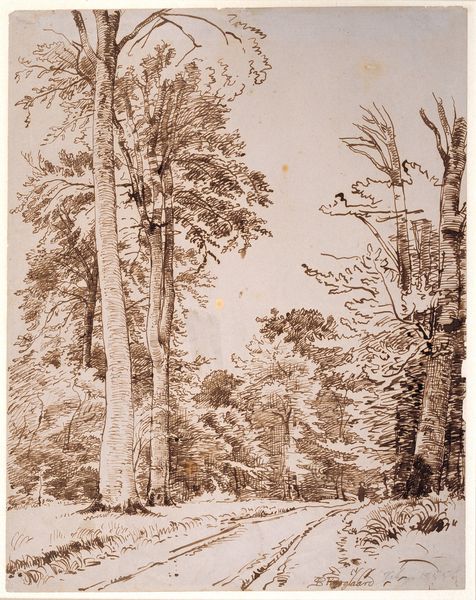
drawing, gouache, ink
#
drawing
#
16_19th-century
#
gouache
#
landscape
#
charcoal drawing
#
ink
#
romanticism
#
watercolor
Copyright: Public Domain
Johann Wilhelm Schirmer rendered this forest scene in ink and wash, capturing the romantic sensibility of his time. Made in Germany, likely mid-19th century, the artwork reflects a growing interest in the natural world, fueled by scientific advancements and a corresponding cultural movement of Romanticism. The focus on the tranquil beauty of the forest suggests an escape from the rapid industrialization transforming German society. This aesthetic appreciation for nature was also intertwined with emerging nationalistic sentiments, where the landscape became a symbol of German identity and cultural heritage. Schirmer's choice to depict a seemingly untouched forest aligns with a conservative longing for an idealized past, implicitly critiquing the disruptive forces of modernity. Historians can study the writings, political movements, and other art from the period to contextualize such artwork. The meaning of Schirmer's work depends on an understanding of the social and institutional history of 19th-century Germany.
Comments
No comments
Be the first to comment and join the conversation on the ultimate creative platform.
